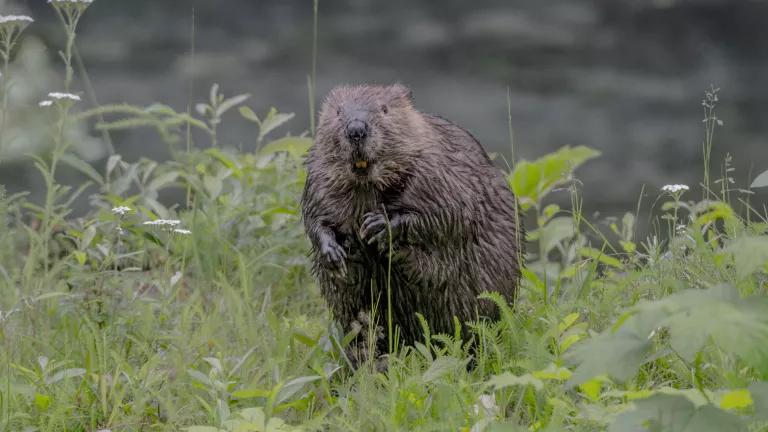
Today, the Endangered Species Coalition released its 2017 Top Ten Endangered Species Report—“Suppressed: How Politics Drowned Out Science for Ten Endangered Species”—chronicling how politics is trumping science (pun intended) and threatening the survival of 10 endangered species in the Trump era. The species run the gamut from ocean-dwellers (Pacific Leatherback Sea Turtle) to sagebrush dancers (Greater Sage-Grouse) to elusive cats threatened by Trump’s border wall (Ocelot).
But my personal favorite is the “living dinosaur” known as the pallid sturgeon. This gentle, toothless giant grows up to six feet long and weighs up to 80 pounds. It has managed to outlive the dinosaurs, with fossils dating back 70 million years, but it may not survive decisions being made today by the Trump administration.
The pallid used to thrive throughout the Missouri and Mississippi River basins, but is now endangered throughout its range. The above photo shows U.S. Fish & Wildlife Service employees releasing a pallid back into the Yellowstone River, one of its last, best hopes for survival. Fewer than 100 wild-born sturgeon survive in the Upper Missouri and Yellowstone rivers, and those fish have not successfully reproduced in 60 years.
The problem is dams.
Dams blocking the pallid’s historic habitat have made it impossible for the fish to successfully spawn, by blocking access to spawning habitat, changing the amount and timing of river flows, and reducing the drift distance that young pallid need to mature.
One simple solution has long been championed by biologists: remove a rock diversion dam on the Yellowstone River near Glendive, Montana, to allow pallid to access miles of good spawning habitat and open up an adequate rearing range for young sturgeon. NRDC and our partners at Defenders of Wildlife hired experts to show that the diversion dam could be removed while maintaining irrigation in the region with a series of riverside pumps and other infrastructure improvements. But instead of pursuing this win-win solution, the U.S. Army Corps of Engineers and U.S. Bureau of Reclamation decided to do the opposite—and turn the rock diversion dam into a permanent obstacle for pallid by constructing an immovable concrete dam in its place. Thankfully, a federal judge has stopped the Trump Administration from beginning work on the new, permanent dam ... for now.
But the plight of the pallid sturgeon is indicative of a much larger story—a story of worldwide threats to freshwater species that are largely being driven to extinction from dams, excessive water diversions, and other manipulations of our rivers, lakes, and wetlands. The 2016 Living Planet Report from the World Wildlife Fund documented that species living in freshwater habitats are faring far worse globally than terrestrial species, with populations of freshwater species dropping by an alarming 81% between 1970 and 2012, more than double that observed in land (38%) and marine (36%) populations.
Habitat loss is the major cause of declining freshwater species populations, especially for fish, with almost half (48%) of global river volume already altered by flow regulation, fragmentation, or both. Completion of all dams planned or under construction would mean that natural hydrologic flows would be lost for 93% of all river volume worldwide. As we’ve seen in the United States alone, this alteration of river flows and volume is wiping out numerous species that are important sources of food, economic prosperity, and cultural connectivity, such as salmon, trout, and sturgeon. The destruction of freshwater habitats caused by dams also ripples throughout the ecosystem, from endangering Southern Resident Orca on the West Coast due to lack of salmon—their main food source—to the loss of bald cypress seedlings along the Savannah River in Georgia, and the destruction of a way of life for many Native Americans.
Today’s report declares that these 10 species “serve as ambassadors to a larger story of species conservation concerns.” That’s certainly true of the pallid sturgeon and the global threats posed by damming and altering our river systems. Let’s heed the call of science and give these species a fighting chance by pursuing alternatives to destructive dams and diversions.



